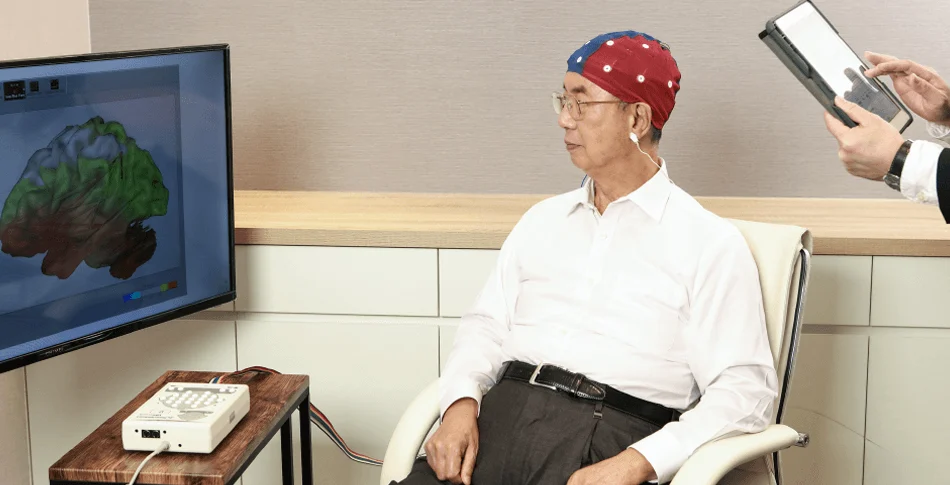Quantitative EEG(QEEG)
SERVICE
SERVICE INTRO
Service
Clinical EEG tests, which are routinely used in medical testing, are interpreted by a medical specialist. The main purpose of clinical EEG test is to diagnose, for example, abnormal electrical discharge to the brain (epilepsy), or other brain disorders such as headaches, traumatic brain injury, sleep disorders, etc. Quantitative Electroencephalography (QEEG), or Brain Mapping, is a quantitative and objective analysis of brain wave signals, to evaluate the performance of brain functions.
Detect Brain Disorders Early
The test can provide information about the functional status of daily living (e.g., attention, anxiety, mood, learning, or behavior disorders) and can also help detect early brain disorders associated with neuropsychological disorders such as dementia, mild cognitive impairment, and so on. QEEG testing may detect the precursor of neuropsychological disorders. Early detection of brain dysfunction through QEEG can prevent developing disorders, and early intervention of neurofeedback can improve brain health.

Who can benefit from neurofeedback?
TARGET
Training Sessions
Training Instructions

Training Process
TRAINING PROCESS

Before testing
- Bring a list of current medications.
- Avoid over-the-counter medications.
- Do not consume alcohol 8 hours before the test.
- Refrain from smoking 2 hours before the test.
- Maintain regular meals on the day of testing.
- Thoroughly wash your hair the night before the test.
- Avoid hair care or styling products on the day of testing.

On the day of the test
- Wear comfortable clothing.
- By participating, you agree that your data may be used for research publications or training purposes while maintaining full anonymity.
- A psychologist will assess your mental and physical state to ensure you are suitable for QEEG testing on the day.
- The QEEG test will be conducted in a private and comfortable space.
- The technician will measure your head size to ensure accurate electrode placement. A brainwave cap, consisting of 19 electrodes, will be fitted to precisely measure brainwave signals.The entire QEEG test process takes approximately 40 minutes.

Report and neurofeedback training course
- After the QEEG test, a basic cleaning of your head will be performed.
- After completing the QEEG test, you will be asked to fill out a psychological questionnaire, which takes approximately 30-40 minutes to complete.
- The analysis of the test report will take about 7-10 business days. A specialist will explain the report in detail to help you fully understand the functional state of your brain.
Additional Information
Quantitative Brain Function Analysis
Exebrain QEEG Analysis: This involves quantitative and scientific analysis of EEG data to evaluate brain function and efficiency.

